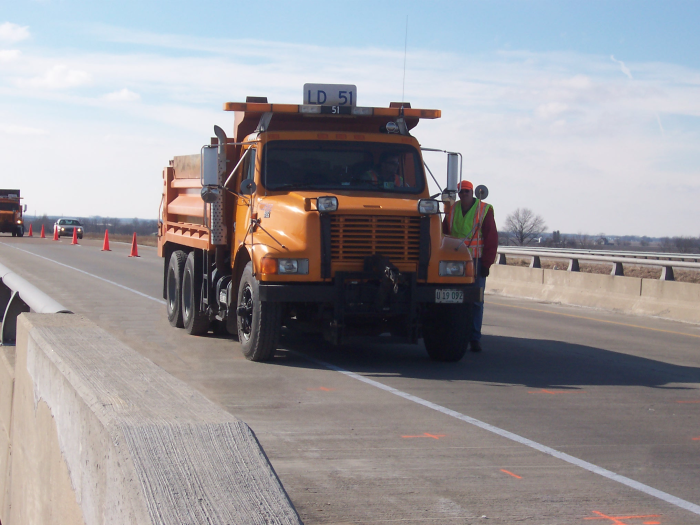
イリノイ州運輸局は、支持力の計算方法を検証するため、州間高速道路 55 号線および 70/270 号線沿いにある 12 の州間高速道路橋で試験を実施しました。運輸局は、研究パラメータの範囲が広い典型的なイリノイ州の州間高速道路橋を選択しました。これらの橋の梁ウェブには、荷重によるせん断応力を測定するためのひずみゲージ ロゼットが取り付けられました。各橋で約 6 か月間、Campbell Scientific データロガーを使用して試験データを収集し、荷重の傾向を調べました。
ほとんどの試験地点で、研究者は、ウェブの片側に垂直に 3 つの 3 軸ひずみロゼットを設置し、選択した梁の反対側のウェブ面にも設置して、ねじれの影響を調べました。コンクリート梁へのゲージ設置では、各ロゼットの位置に 3 要素 3 軸パターンで個別のひずみゲージを配置しました。
プログラミング、信号調整、リモート監視、レポート機能のために、Campbell Scientific CR5000 データロガーが選択されました。較正を容易にするためにすべての梁にひずみゲージが取り付けられていたため、各橋梁サイトでの初期荷重テストには複数の CR5000 ユニットが使用されました。初期段階に続いて、長期テストのために各橋梁サイトに 1 台のデータロガーが必要になりました。
データロガー プログラムは、CR5000 に付属する CRBasic プログラミング言語とランタイム コンパイラを使用して、Southern Illinois University Edwardsville (SIUE) によって開発されました。SIUE は、ひずみゲージの連続監視、梁せん断の計算、ひずみゲージの定期的なゼロ調整、およびデータ保存などの機能を書き込みました。データロガーのバッテリーは、橋台の側面に取り付けられた 75 W のソーラー パネルによって充電されました。
初期荷重テストでは、すべてのゲージが機能していることを確認し、調整を行うために、データがすぐにラップトップ コンピューターにダウンロードされました。長期データ取得は通常、現場で CompactFlash (CF) カードに保存された大きなファイルで構成され、その後、詳細な分析のためにデスクトップ コンピューターにダウンロードされました。梁せん断の特定のしきい値を超えた場合にのみデータを保存することで、メモリを節約しました。
プロジェクト チームは、CR5000 データロガーと関連ソフトウェア製品が提供するパフォーマンスと信頼性に非常に満足していました。
ケーススタディの概要
アプリケーション
交通負荷の長期監視場所
イリノイ州使用製品
CR5000寄稿者
Brad Cross, PhD., P.E., S.E., Nader Panahshahi, PhD., Brent Vaughn, P.E. Southern Illinois University Edwardsville David Petermeier, P.E., S.E., Yuen Shuenn Siow, P.E., S.E. Modjeski and Masters参加団体
Thomas Domagalski, P.E., S.E. イリノイ州運輸局計測項目
三軸パターンの箔ひずみゲージを使用した梁せん断PDFで見る